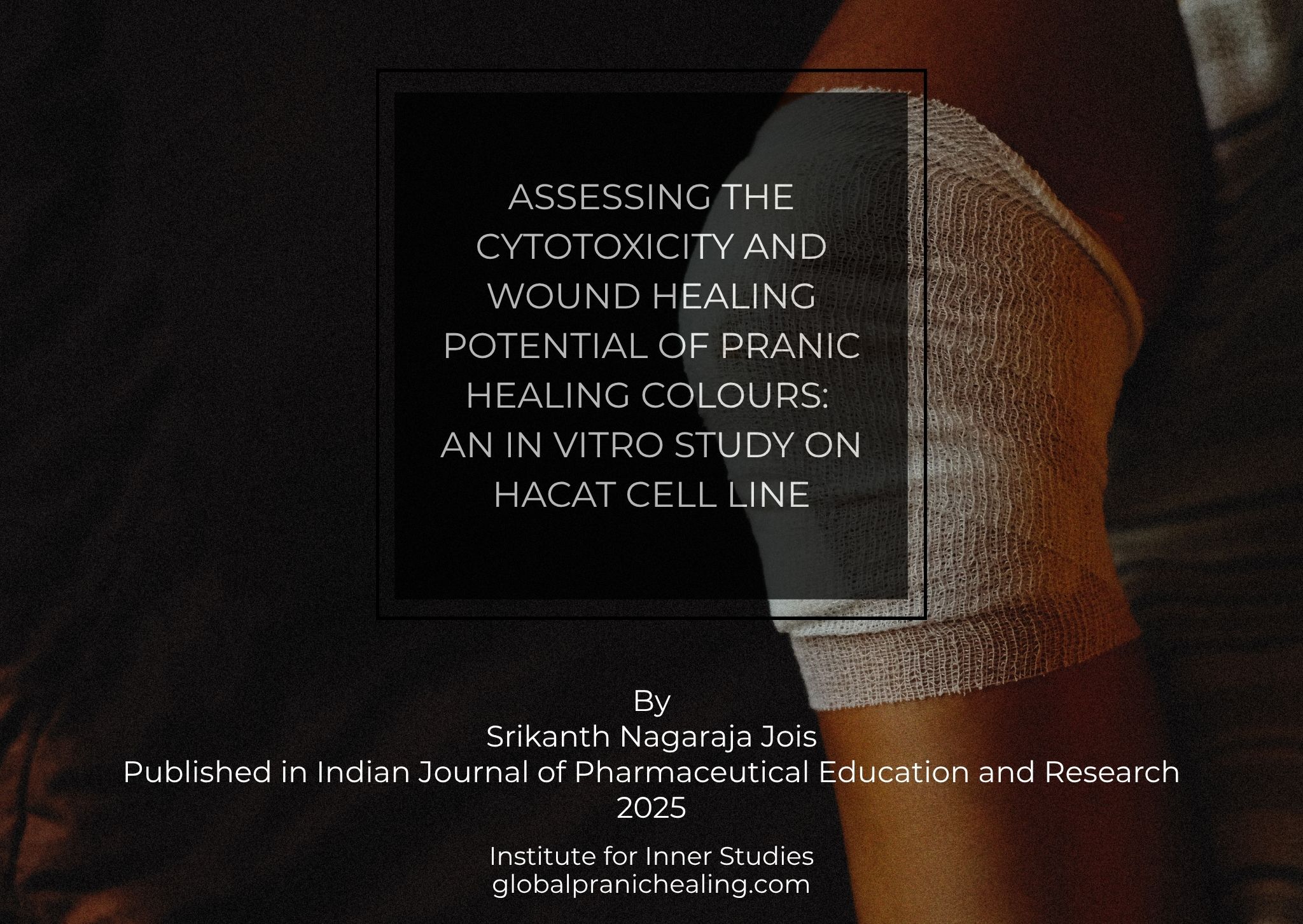
01 Oct Assessing the Cytotoxicity and Wound Healing Potential of Pranic Healing Colours: An in vitro Study on HaCaT Cell Line
Abstract
Background
Pranic Healing is a complementary therapy that uses specific colours to enhance the healing of wounds.
Objectives
Our research sought to investigate the impacts of integrating various Pranic Healing (PH) colours on wound healing.
Materials and Methods
HaCaT cells were subjected to cytotoxicity and scratch assays. After wound formation, Pranic colours were projected to the cells individually or in combination. The data was collected at the 24th, 48th and 72nd hr.
Results
Cytotoxicity tests revealed PH colours were safe. Cell viability did not differ significantly between groups, according to the Kruskal-Wallis test. However, there were substantial variations in the impact that PH colours had. In contrast, a combination of colours proved more effective than single colours in promoting wound healing.
Conclusion
The study underscores the potential impact of PH colours on enhancing cell health and promoting wound healing.
